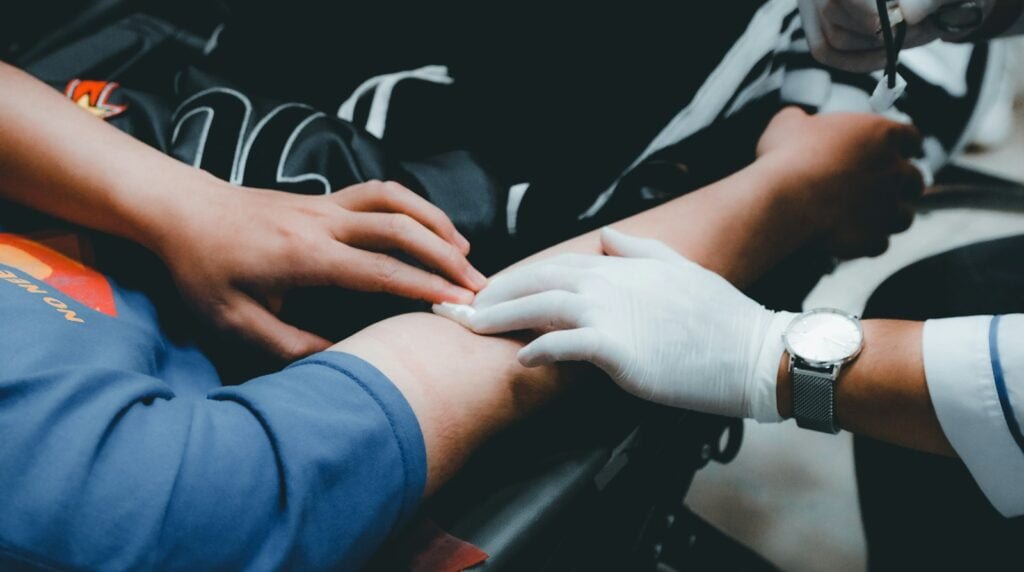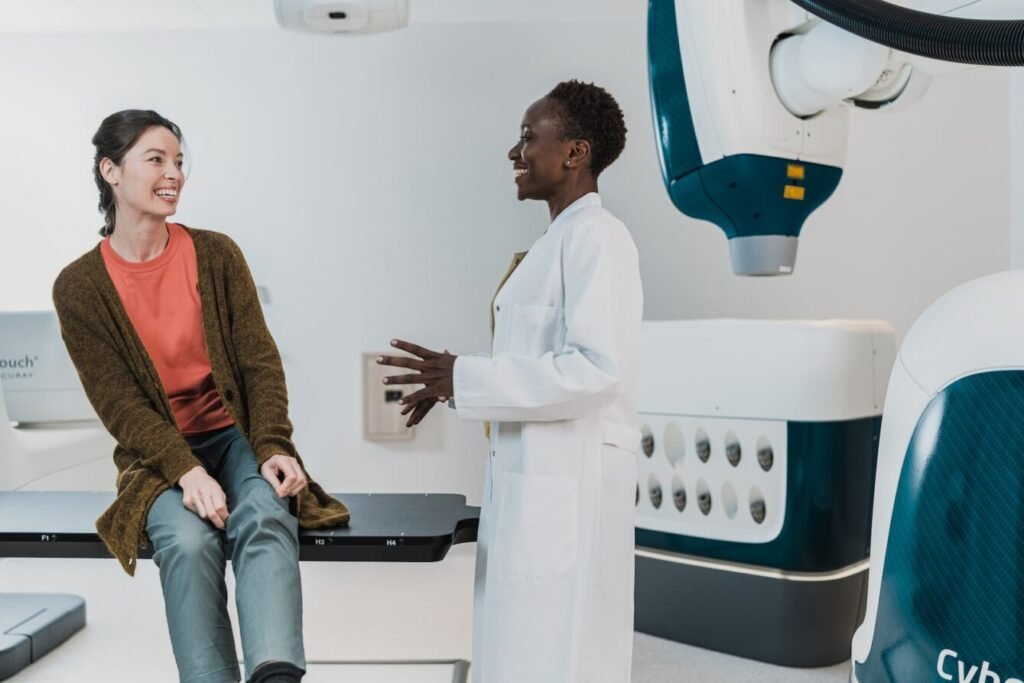Diabetes with nephrolithiasis a cause of renal failure leading to giant pyonephrosis, a woman case report
Miloud Chakit1* . RachidAyoub Zahir 2 . Abdelhalem Mesfioui1
1. Biology and Health laboratory, Faculty of Sciences, Ibn Tofail University, Kenitra Morocco.
2. Service of Surgery, El Idrissi Hospital, Kenitra, Morocco.
* Corresponding author: Miloud Chakit
Biology and Health Laboratory, Faculty of Sciences
Ibn Tofail University, BP133, Kenitra, Morocco
Tel : 212678877912
ORCID : 0000-0001-5310-3597
Abstract
A pyelonephritis complicated by multiple urolithiasis, severe hydroureteronephrosis and kidney exclusion treated by nephroureterectomy. A 30 year-old woman was referred to us for recurrent episodes of urinary tract infection, abdominal pain and severe hydronephrosis. Abdominal CT and a Tc-99m MAG3 scan showed a non-functioning obstructed kidney with shaped urolithiasis of pyelic cavity and in the distal ureter. Nephroureterectomy was performed by open extraperitoneal nephrectomy. This technique avoided the need for a more extended nephrectomy incision or even a second iliac incision. It also ensured complete excision of the distal ureter with minimal risk of developing the ureteral stump syndrome, which sometimes follows nephroureterectomy.
We believe that laparoscopic-assisted nephroureterectomy may be a suitable technique in those cases of difficult nephrectomy where a ureteral stump syndrome is likely to develop.
Key words : nephrectomy, pyonephrosis , nephrolithiasis, diabetic woman, case report.
Introduction
Pyonephrosis is a rare pathology causing destruction of the renal parenchyma. It is commonly associated with chronic urinary obstruction, urolithiasis, urinary tract infection and severe renal damage[1]. The peak incidence is in the older female patients and affecting mostly the left kidney [2]. Several causes are related to its aetiology like urinary tract infection, urolithiasis, urinary obstruction, abnormal lipid metabolism, lymphatic obstruction and altered immune response[3]. The diagnosis is usually evoked before the clinical context with characteristic CT images and rarely abdominal distension with massive pyonephrosis. Late management may result in death by septic shock.
We will report a Case of massive pyonephrosis with an atypical germ accidently discovered in front of an image of sub-occlusive syndrome. We will discuss the causative agents and therapeutic management based on a review of the literature.
Case presentation
A 30-year-old Woman with a history of type 2 diabetes was followed for 10 years on insulin therapy. The patient presented abdominal pain and severe hydronephrosis recurrent pyelonephritis and urolithiasis. His history was uneventful until 24 years of age when he experienced episodes of unexplained recurrent fever treated with antibiotics. He then remained asymptomatic until the age of 29 when he was admitted to the local General Surgery Unit because of acute abdominal pain on the right iliac area. Initial appendicitis was diagnosed and treated with i.v. antibiotics. A few months later, he developed recurrent episodes of UTI and pyelonephritis with weight loss, anaemia and abdominal pain. The renal ultrasound and contrast CT-scan showed severe right hydroureteronephrosis with enlarged kidney [Figure 1] and shaped distal urolithiasis, [Figure 2] with functional exclusion of the kidney. The cystography was negative for VUR. The Tc-99m MAG3 scan confirmed a mute kidney on the right and good compensatory function on the left. The pre-operative diagnosis was obstructive megaureter complicated by shaped urolithiasis and exclusion of renal function secondary to XGP. She felt too anxious to delay treatment for the renal mass until the completion.
Clinical examination revealed a conscious patient, febrile at 38 ◦C, abdominal distension with tenderness in the left hypochondrium. Laboratory tests, the patient had creatinine 13,6 mg/L, normal kalemia, hyperleukocytosis and cytobacteriological examination of the urine had isolated an albican candida.
We ordered a simple abdominal X-ray for transit disorders which was normal, then an abdominal ultrasound which revealed left pyelocalic dilatation laminating the renal cortex with echogenic content, which could be related to purulent retention. The patient also had an emergency CT urogram abdominal CT scan that
Pyonephrosis is a rare pathology causing destruction of the renal parenchyma.The diagnosis of pyonephrosis was made on the basis of radiological images and cytobacteriological examination of the urine.A patient of 49 years old, followed for 10 years under insulintherapy was admitted for a massive pyonephrosis of the left kidney.The clinical examination found a conscious patient, febrile at 38 ◦C, an abdominal distension with a tenderness at the level left hypochondrium. the pus was drained by percutaneous nephrostomy that has brought up 5L pus.A left nephrectomy was performed in front of a non-functioning kidney.
Confirmed massive pyonephrosis and bilateral ureteral lithiasis (Fig. 2). After restoring the patient’s condition, urinary detour by percutaneous nephrostomy was performed under ultrasound guidance. The evolution was marked by apyrexia, improved white blood cell count and PCR. In addition, a renal scan was performed, showing a normally functioning right kidney and a non-functioning left kidney. Nephrectomy was performed after 3 weeks (Fig. 3). After removing the calculi from the kidney. The stone analysis show monohydrate calcium oxalate.
Discussion
Urinary stones are solid particles found in the urinary tract, some skiney stones can have a huge size like the bladder stone [4]. They can cause pain, nausea, hematuria, vomiting, and possibly chills with fever due to bacterial urinary tract infections. Diagnosis is by x-ray imaging, usually a no-exam helical CT scan. Treatment is based on analgesics, antibiotics in case of infection, expulsive medical treatment and, sometimes, minimally invasive surgical interventions (shock wave lithotripsy or endoscopic stone removal) [5–7]. Persistence of the stone in the urinary tract can lead to acute renal failure.
Risk factors vary by population. The main risk factor is hypercalciuria, a hereditary condition present in 50% of men and 75% of women suffering from calcium stones; thus, in the event of a family history of stones, the risk of recurrent stones is increased.
Pyonephrosis is an infection of the upper urinary tract characterized by parenchymal damage and causes subsequent loss of renal function[8]. In 70% of cases, the main anatomical factor in pyonephrosis is ureteral obstruction following urolithiasis. Infection is most commonly caused by E. coli, Klebsiella Enterococcus, Proteus m or Pseudomonas[9].
Treatment of pyonephrosis includes percutaneous drainage of pus, placement of a retrograde ureteral stent and in extreme cases, nephrectomy. The use of antibiotics is not effective in pyonephrosis, surgery is usually necessary. Percutaneous nephrostomy (PCN) is the most suitable and least invasive method for draining cells retained in the upper urinary tract.
In our case, the diabetic woman was in serious condition with a non-functional kidney, hence the nephrectomy.
In diabetic patients, the clinical presentation and the infectious organism may be unusual. Radiological imaging and uroscanner are means of early diagnosis of this pathology.
Pyonephrosis can progress to septic shock and serious, sometimes fatal complications. Percutaneous nephrostomy is strongly recommended in the treatment of pyonephrosis and subsequent renal scintigraphy is necessary to monitor the functioning of the kidney [10].
Conclusion
The coexistence of urolithiasis and diabetes mellitus in a patient may complicate a pyelonephritis and cause pyonephrosis with gigantic size. In this case, which generally leads to the non-functionality of the affected kidney, nephrectomy remains the indicated treatment.
Funding
No funding from an external source supported the publication of this case report.
Patient consent
Consent was obtained from the patient to publish the clinical details and the images included.
Provenance and peer review
This article was not commissioned and was peer reviewed.
Conflict of interest statement
The authors declare that they have no conflict of interest regarding the publication of this case report.
References
[1] N.L. Avnet, T.W. Roberts, H.R. Goldberg, Tumefactive xanthogranulomatous pyelonephritis, Am J Roentgenol Radium Ther Nucl Med. 90 (1963) 89–96.
[2] F. Quinn, A. Dick, M. Corbally, M. McDermott, E. Guiney, Xanthogranulomatous pyelonephritis in childhood, Arch Dis Child. 81 (1999) 483–486.
[3] M. Levy, R. Baumal, A.A. Eddy, Xanthogranulomatous pyelonephritis in children. Etiology, pathogenesis, clinical and radiologic features, and management, Clin Pediatr (Phila). 33 (1994) 360–366. https://doi.org/10.1177/000992289403300609.
[4] M. Chakit, A. Aqira, A. Mesfioui, A case report of a giant bladder stone (12 × 8 cm, 610 g), Radiology Case Reports. 19 (2024) 970–973. https://doi.org/10.1016/j.radcr.2023.11.081.
[5] M. Chakit, A. Aqira, A. El Hessni, A. Mesfioui, Place of extracorporeal shockwave lithotripsy in the treatment of urolithiasis in the region of Gharb Chrarda Bni Hssen (Morocco), Urolithiasis. 51 (2023) 33. https://doi.org/10.1007/s00240-023-01407-9.
[6] M. Chakit, A. El Hessni, A. Mesfioui, Ethnobotanical Study of Plants Used for the Treatment of Urolithiasis in Morocco, Pharmacognosy Journal. 14 (2022) 542–547. https://doi.org/10.5530/pj.2022.14.133.
[7] M. Chakit, R. Boussekkour, A. El Hessni, Y. Bahbiti, R. Nakache, H.E. Mustaphi, A. Mesfioui, Antiurolithiatic Activity of Aqueous Extract of Ziziphus lotus on Ethylene Glycol-Induced Lithiasis in Rats, Pharmacognosy Journal. 14 (2022) 596–602. https://doi.org/10.5530/pj.2022.14.141.
[8] R. Rabii, A. Joual, H. Rais, H. Fekak, K. Moufid, S. Bennani, M. el Mrini, S. Benjelloun, [Pyonephrosis: diagnosis and treatment: report of 14 cases], Ann Urol (Paris). 34 (2000) 161–164.
[9] R.D. Klein, S.J. Hultgren, Urinary tract infections: microbial pathogenesis, host-pathogen interactions and new treatment strategies, Nat Rev Microbiol. 18 (2020) 211–226. https://doi.org/10.1038/s41579-020-0324-0.
[10] A. Mosbah, H. Guermazi, A. Siala, [Percutaneous nephrostomy in the treatment of pyonephrosis. A comparative study apropos of 36 cases], Ann Urol (Paris). 24 (1990) 279–281.


